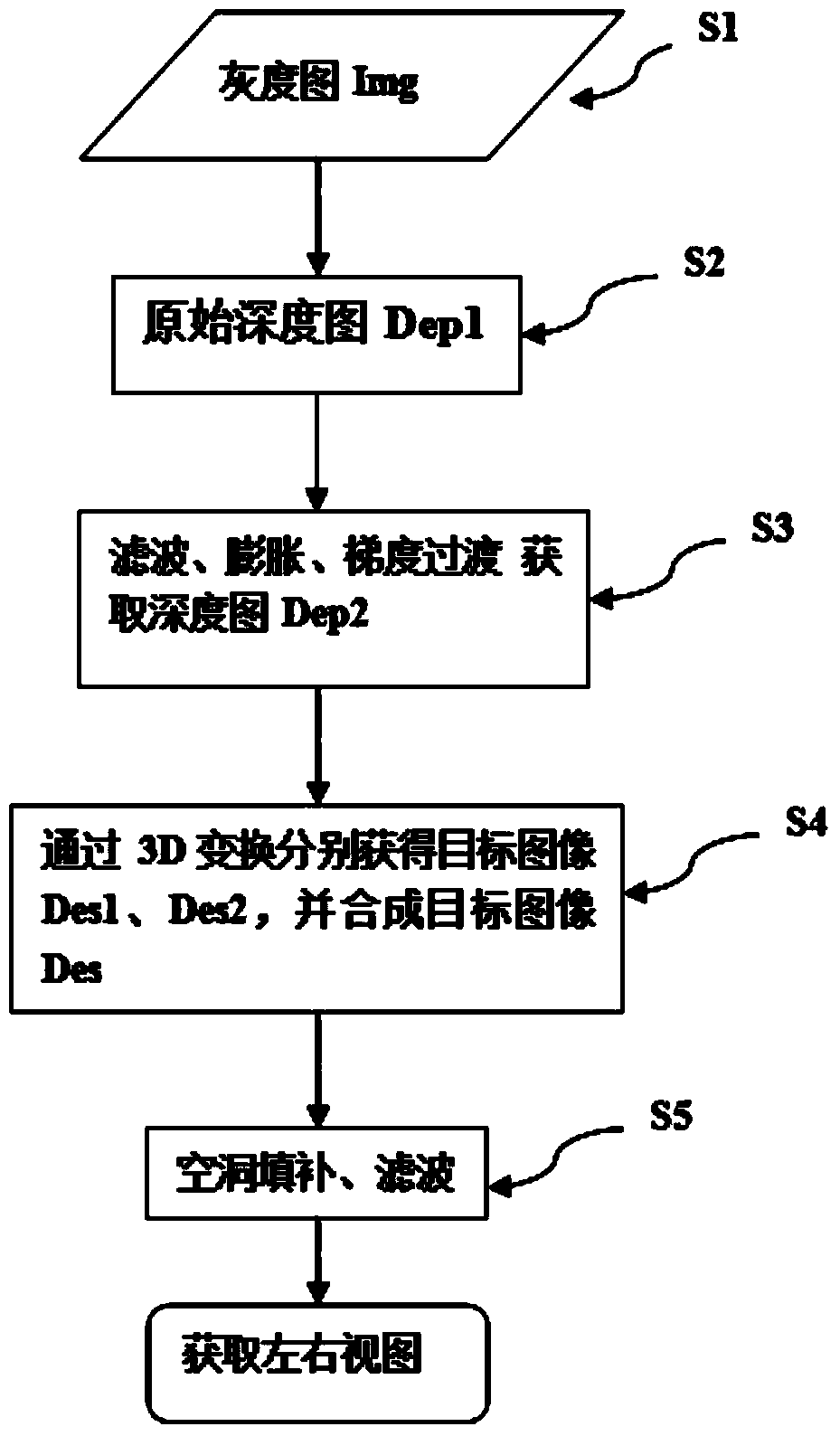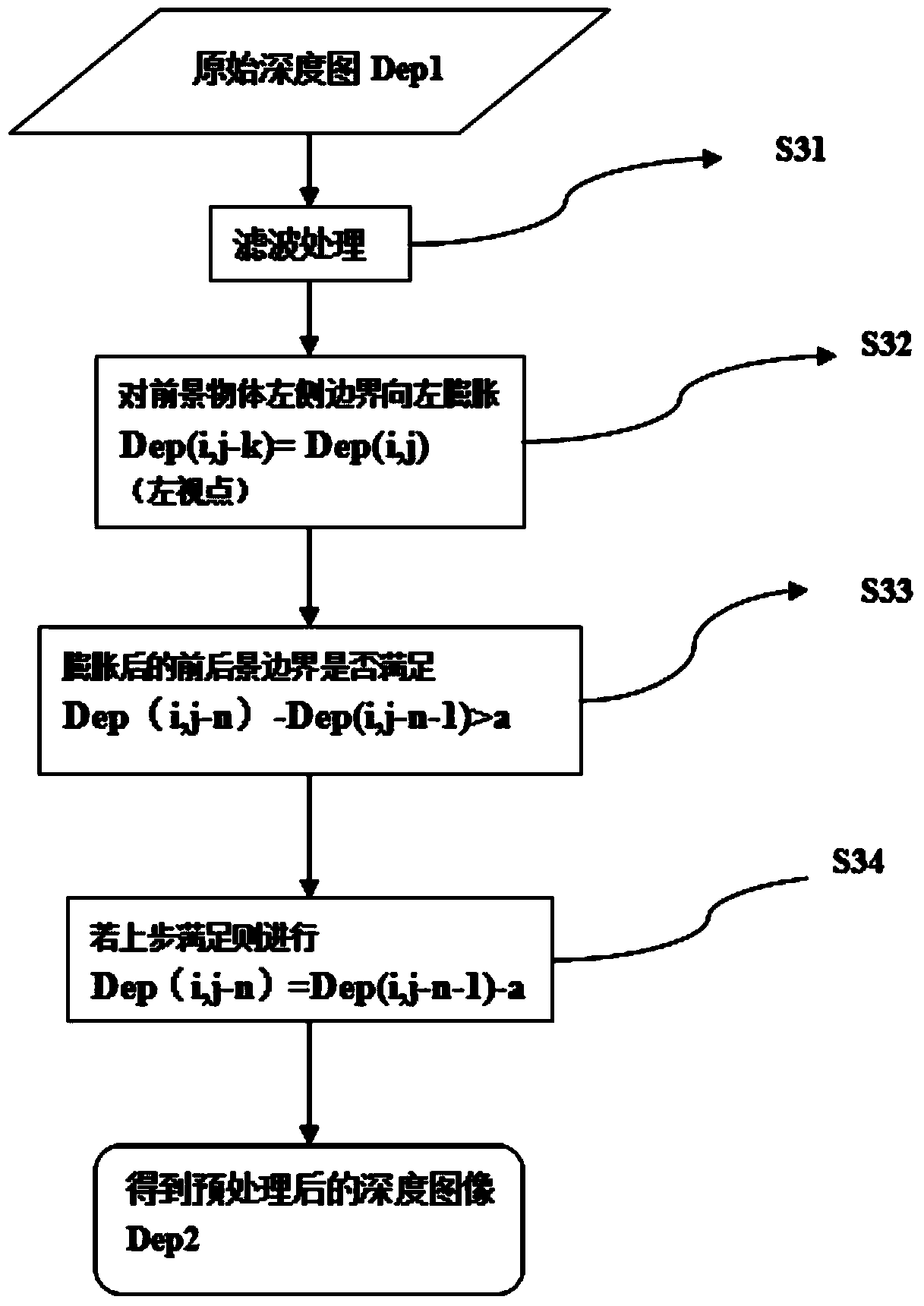Rapid and efficient hole filling algorithm based on foreground and background gradient transition
A gradient transition and hole technology, applied in computing, image data processing, instruments, etc., to achieve the effect of reducing computing time, easy to understand, and accurate results
- Summary
- Abstract
- Description
- Claims
- Application Information
AI Technical Summary
Problems solved by technology
Method used
Image
Examples
Embodiment Construction
[0040] In the 2D to 3D technology, hole filling has a decisive impact on the 3D effect, and it is also the last step of the 3D conversion technology. In order to make the purpose, advantages and technical solutions of the present invention clearer, use the attached Figure 1-7 And in combination with specific examples, the present invention is further described in detail.
[0041] figure 1 It is a schematic flowchart of a method for generating a depth map in the present invention. A fast and efficient hole filling algorithm based on the gradient transition between foreground and foreground. The specific implementation steps include the following steps:
[0042] step S 1: Get the grayscale image Img of the input image;
[0043] step S 2: Obtain the original depth image Dep1 of the grayscale image Img using a depth estimation algorithm based on relative height and depth clues;
[0044] step S 3: Perform preprocessing on the depth map, such as filtering, foreground expans...
PUM
 Login to View More
Login to View More Abstract
Description
Claims
Application Information
 Login to View More
Login to View More - Generate Ideas
- Intellectual Property
- Life Sciences
- Materials
- Tech Scout
- Unparalleled Data Quality
- Higher Quality Content
- 60% Fewer Hallucinations
Browse by: Latest US Patents, China's latest patents, Technical Efficacy Thesaurus, Application Domain, Technology Topic, Popular Technical Reports.
© 2025 PatSnap. All rights reserved.Legal|Privacy policy|Modern Slavery Act Transparency Statement|Sitemap|About US| Contact US: help@patsnap.com



